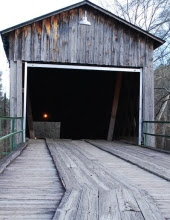While he's pounding his front paws on the ground and thrashing his body around upon my return home, seemingly unable to control his indomitable joy.... While he's sniffing a single leaf for a very long time. While he's paused, one paw up, catching a scent in the air like a tiny detective. (89)That all these particulars of Peter also describe my Brandy -- and Mia before her, back and back through half a century of dogs (see my page Loving Dogs) -- may suggest to an unsympathetic person, you've seen one dog, you've seen 'em all.
There's truth to that. I've been re-reading Montaigne, who was fascinated 450 years ago by his sleeping dog's dreams of chasing rabbits just as Conaboy and I are today. So there's a true corollary: You've met one devoted dog caretaker, you've met us all. So is there some problem with that?
Like Conaboy, we spend money on merchandise and time on activities, all because we do not want to disappoint our dogs. She takes Peter to a dog festival "Woofstock" (32), dance lessons, obedience training, DNA testing, and ghost hunting. Peter generally doesn't seem too excited by these, but Conaboy enjoys interacting with him in these different situations.
Like Conaboy, we shell out monthly for pet insurance. It's worth it to know, when the vet tells her how many thousands of dollars Pete's surgery will cost, that she doesn't have to think about the unthinkable alternative. At least, not yet.
One chapter lays out answers to the inevitable question, "Will My Dog Go to Heaven?" Conaboy interviews theologians who disagree. She quotes the Catholic Catechism's teaching that animals bless us "by their mere existence" and so "they deserve kindness," even as we eat some and wear some (226). She concludes that there's "beauty" in being
...lucky enough to have an ephemeral piece of light as a part of your life, aware of its impermanence from the beginning and loving it wholly anyway. Knowing someone who is only good, and getting to be their caretaker. Letting this dog believe that you are the sun and moon, even though you are just human. Protecting them until you no longer can. (228)
So this document of Peter's particulars, being also a reflection of Brandy's, and Mia's, is a way for Conaboy and me and all of us to cherish and honor our dogs. Only Conaboy makes money on it. "What a scam!" she writes (intro, p. xiii).
Thanks to Suzanne for this book, a Christmas gift. She has known me and my dogs Beau, Luis, and Mia. We've taken long walks to get to know Brandy. She invited me for Christmas with her, tiny Tabby, and tinier Darcy.
Because I do look for any excuse to include photos of Brandy, I add Conaboy's list of Pete's poses that Brandy also performs:
- Cinnamon roll: Curled, circular, ready to be picked up by a large spatula.
- Superman: Arms stretched out before him, soaring through a dream.
- Gossip sphinx: A modified "sphinx," which is when he sits like a sphinx, gossip sphinx finds his head lowered between his paws, perched and ready to hear who did what. (109)
Left: Suzanne's little guy Darcy on a day that followed weeks of daily visits to feed him and Tabby, when he decided he could trust me. Now we're best buds.

































